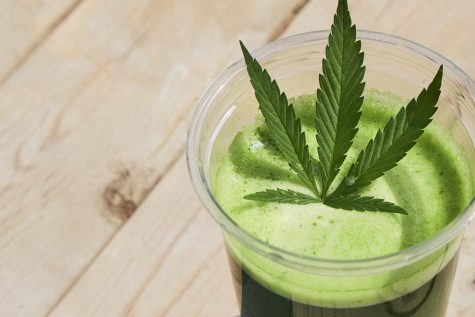New U.S. research could create thousands of cannabis-based medicines
Medical cannabis’ true definition is being rewritten amid global acceptance of the plant’s use as a pharmaceutical drug.
While the transition from its “taboo” reputation to a highly sought after therapeutic agent may still be happening, the outlook for medical cannabis looks bright.
In particular, the United States—where medical cannabis is now legal in 37 states and U.S. territories—is leading the way in terms of transforming the future of cannabis-based medicines.
The U.S. federal government is, for the first time ever, inviting four new American companies to cultivate and investigate the cannabis plant for research purposes. Eventually, cannabis could serve as the primary ingredient for a whole new range of pharmaceutical drugs.
Groff North America is one of the companies that has been granted authorization to conduct studies into cannabis for medicinal purposes. Headquartered in Red Lion, York County, orthopedic spine surgeon Dr. Steve Groff established the company with the intent of unraveling cannabis’ therapeutic qualities.
“You don’t take that opium poppy and ask a patient to rub it on their lip for morphine. It gets processed, it’s been FDA-approved,” said Groff, who discussed the benefits of using cannabis plant flowers as an alternative to poppy flower-based opioid medications.
Growth completes first batch of cannabis for medical research
On February 28, Groff North America confirmed the completion of its first batch of medicinal-grade cannabis for research purposes. The announcement also revealed that Groff had made the first ever federally authorized transfer of domestically-grown cannabis to the U.S. Drug Enforcement Agency (DEA).
Because of this, the medical and scientific communities can now benefit from broader access to research for the production of medicines that may serve as a safer alternative to smoking or vaping.
In the future, researchers like Groff hope to provide cannabis as a treatment option for a broad scope of medical conditions, such as anxiety, autism, cancer, epilepsy, insomnia, inflammation, parkinson’s disease and PTSD.
“I look forward to a time when they are not considered alternative therapies or home remedies but actually first-line therapies,” said the CEO of Zelira, Oludare Odumosu, whose company intends on bulking up the American market with various medicines, including a cannabis-based insomnia drug.
“We could potentially develop north of 11,000 drugs that are cannabinoid-based. Is the future exciting? Absolutely,” added Odumosu.
Cannabis’ federally illegal status has stifled medical research opportunities in the U.S.
Research opportunities into medical cannabis may be blossoming across the U.S., but the plant has not yet been transformed into any common medicines.
This is mainly due to its status as an illicit Schedule 1 drug – a classification that severely hinders researcher’s ability to explore the natural substance’s restorative and remedial properties.
“We know that the plant has powerful potential medical effects, but it clearly needs more refinement, more research and more data,” Groff said.
Although millions of people across America already have easy access to cannabis-based products, Groff believes that patients will have the option to use cannabis medicines specifically designed to treat/relieve the symptoms of certain ailments/conditions within the next 5-10 years.
Interestingly, cannabis isn’t the only medicine derived from nature. Many commonly prescribed pharmaceutical drugs are created using Mother Nature’s ingredients, including mold-derived Penicillin and willow tree bark-derived salicylic acid.










